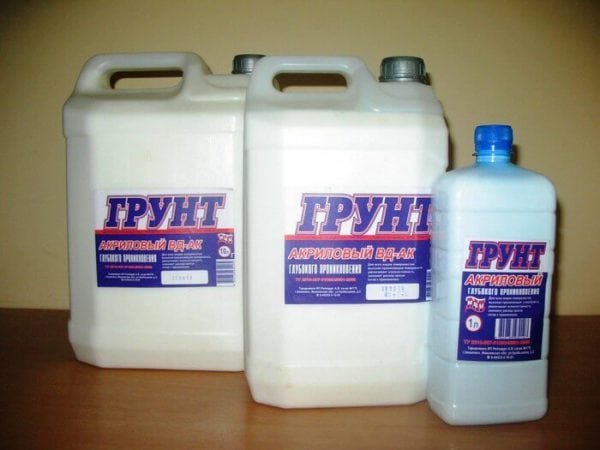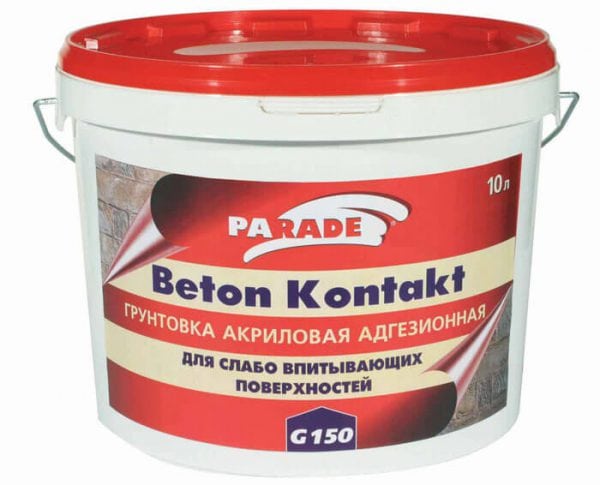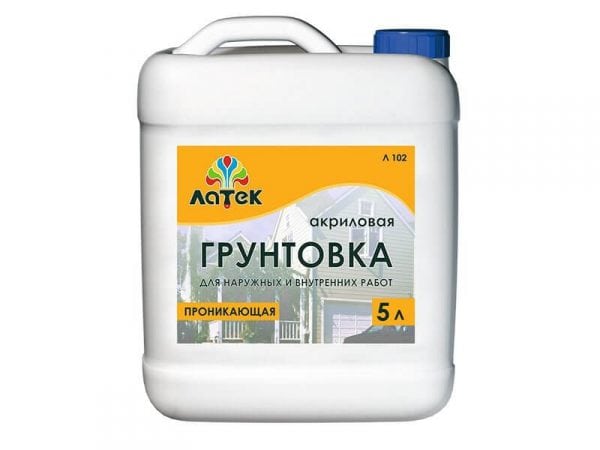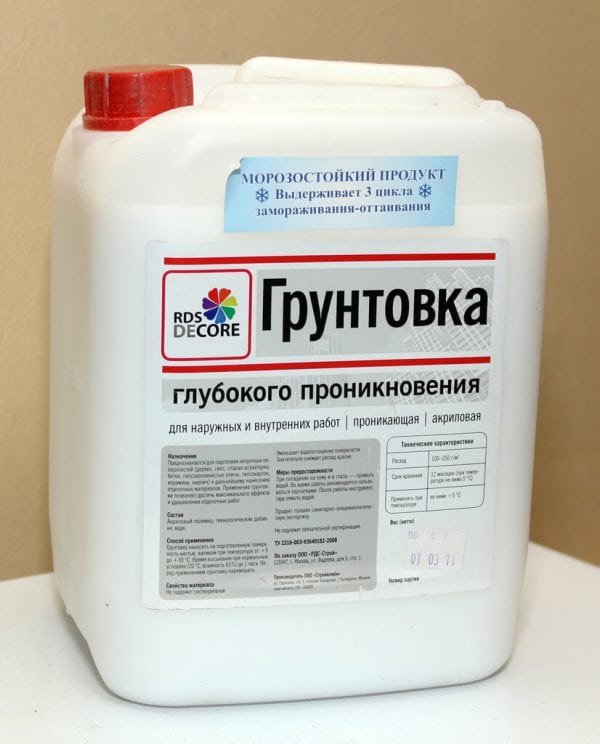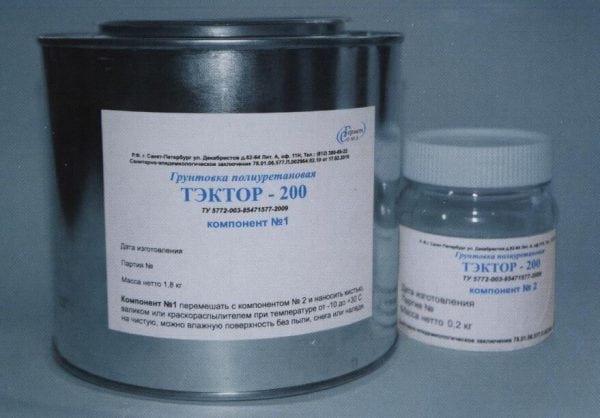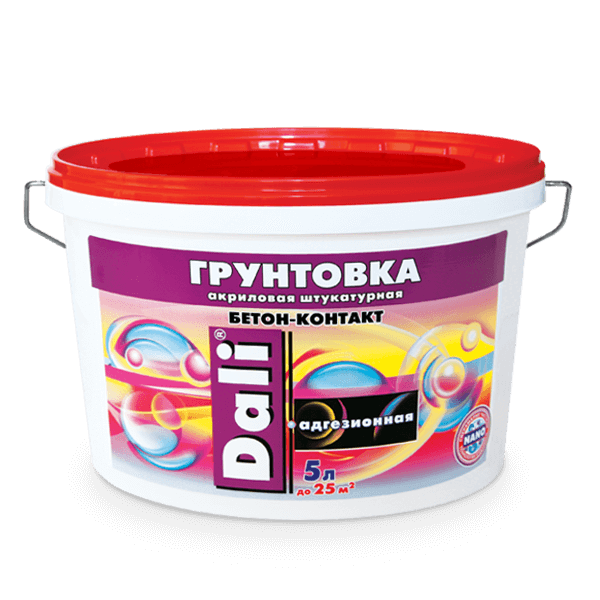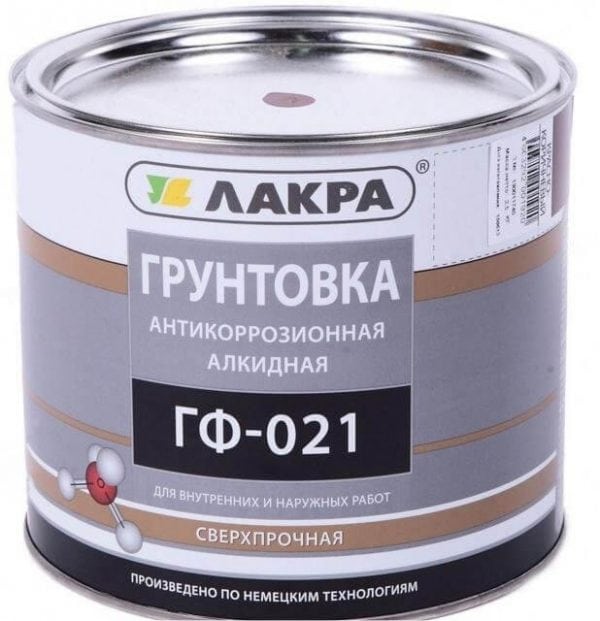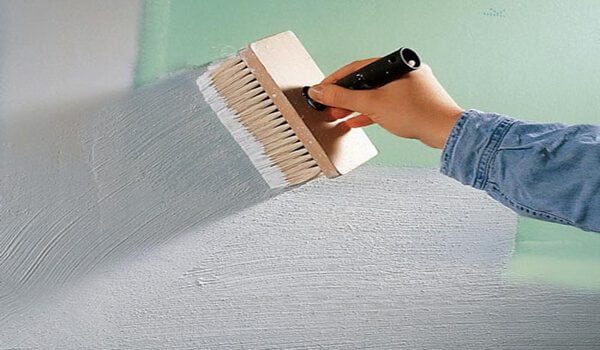During repairs, especially if the surface consists of materials of various structures, the choice of primer is complicated. It is desirable that it be universal, protect the surface from the damaging effects of the environment and have a small consumption per 1 m². In addition, the topcoat should fit well on it. Acrylic primer meets all these requirements, combining profitability, versatility and reliable material protection.
- The benefits of acrylic formulations
- What to look for when buying
- What are acrylic primers
- By appointment
- By type of solvent
- Water soluble
- Organically soluble
- Depending on the surface to be coated
- Deep
- Adhesive
- Water dispersion
- For wood and metal
- How to apply
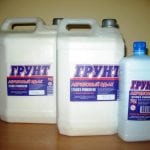
The benefits of acrylic formulations
Acrylic primers have been popular for decades due to qualities such as:
- Universality. Suitable for processing metal, OSB-boards, concrete, wood, drywall and many other materials.
- At the same time, subsequent adhesion with any decorative coating is evened out and increased (paint, tile adhesive, wallpaper).
- Weather resistant. They have high protective properties that resist the negative effects of the environment.
- Hiding power. Able to create a thin, almost imperceptible, but very durable film on the surface.
- Environmental friendliness. Most acrylate compounds are available on a water basis or with a small mass fraction (5-15%) of solvent. Such mixtures are almost odorless due to the presence of non-volatile active substances in them, non-toxic, suitable for processing floors and walls indoors. Organically soluble drugs are slightly more toxic, so it is better to use them for outdoor work.
- Profitability. They have a relatively low cost and low consumption per 1 m².
to contents ↑
What to look for when buying
To ensure full protection of the material from the adverse environmental effects and to obtain a long-term high result during the final finishing, when buying acrylic soil, the following should be considered:
- Type of foundation. A universal primer is well suited for a base consisting of dissimilar materials. For homogeneous walls or floors made of wood, brick or concrete, it is better to choose compositions taking into account the individual characteristics of the material.
- The subsequent type of finish. If the OSB board or wood will subsequently be painted or covered with clear varnish without color, you should pay attention to the tinting of the mixture. If the wallpaper will be glued on the walls as a final coating, the color of the primer does not matter.
- The presence of "bonus" substances that give the processed material additional properties (reinforcing, flame retardant, antiseptic, adhesive, anti-corrosion). What additional components are available and their share should be indicated in the certificate.
- Profitability. As a rule, an acrylic primer containing water as a solvent has a small mixture consumption per 1 m². Soils with organic resins as solvent are less economical, their consumption per m² will be slightly higher. The attached instructions always indicate how much material is needed per 1 m².
- Type of work: external or internal (for walls outside the house an acrylic facade primer must be purchased).
- Environmental friendliness. This characteristic should be taken into account when choosing acrylate preparations for the treatment of walls and floors in residential premises.
- How much dries. Acrylic primer, which has water or a latex base as a solvent, dries very quickly and has almost no smell.
- The presence of a quality certificate. By purchasing cheap goods on the market without a certificate, you can buy a low-grade fake, the use of which will affect the quality of subsequent work. By asking the seller for a certificate, you can protect yourself from the purchase of low-quality goods.
In addition, it is worth paying attention to the form of release of the drug. Acrylate primer mixes can be sold:
- In the form of ready-made solutions, which must be mixed well before use. The certificate and instructions always indicate how much approximately the drug is consumed when processing 1 m² of area.
- In the form of a concentrate, when the solution is brought to the required consistency immediately before use. The purchase of primer-acrylic in the form of a concentrate is much more economical and allows you to achieve the necessary viscosity of the drug, depending on the quality of the base. The concentrate can be diluted not all, but how much is needed for work, because it is stored longer than the finished mixture.
- In cans that are shaken well enough before use. The purchase of soil mixes in cans provides ease of use, low consumption per 1 m². The disadvantage is the small volume of containers and the need to calculate how much you need to buy cans to work on large areas. A bit uncomfortable when processing the floor.
What are acrylic primers
There are primer mixtures according to different parameters.
By appointment
Depending on the technical characteristics and purpose, the acrylic primer can be:
- Deep fixing. Used on loose porous substrates. Such acrylate (acrylic) primers glue small particles, fill the pores and contribute to the overall smoothing of the surface, increasing the strength of the base and the quality of the final finish.
- Deep, which is an improved version of acrylic soil of deep fixation. It can penetrate to a depth of 10 cm, most often used on walls made of old or low-quality concrete.
- Soaking. It is used to smooth a rough surface.
- Adhesive. Increases the quality of applying a decorative coating to a substrate with weak absorbent properties.
- Universal, possessing simultaneously impregnating, adhesive and fixing properties.
- Polyacrylic based on acrylic polymers and water based. Polyacrylic soil mixes are characterized by increased protective and strength properties, but they are more expensive, and their consumption per m² is slightly higher.
All soils must have a certificate confirming their composition and indicating their properties.
In addition, special mixtures with additional properties for:
- anticorrosive protection of metal;
- flame retardant and antifungal protection of OSB-plates and wood;
- UV protection and color loss.
By type of solvent
Depending on the use of the solvent, the acrylic primer can be of the following types.
Water soluble
On a latex or water basis. May contain a small mass fraction of solvent. It dries quickly, has almost no smell due to the presence of non-volatile active substances in it. It is well suited both for interior walls made of drywall, OSB-slabs, concrete indoors, and for outdoor work. Provides a good fit of wallpaper to the walls and protection of the floor from abrasion. There are two types:
- One-component, containing acrylic and latex or water. It looks like a concentrate or a finished mixture.
- Two-component, with the addition of epoxy resins.
Organically soluble
It is based on organic resins. It guarantees increased protection against environmental influences, prevents the development of mold or mildew on the surface.It dries quickly.
Depending on the surface to be coated
In addition to universal acrylic primers suitable for application on any base, compositions are made taking into account the individual characteristics of the surface.
Deep
Depth primer is used for drywall and other moisture absorbing substrates. The surface of the drywall treated with this composition becomes much stronger, its water-repellent qualities increase. Drywall walls must be treated before painting or wallpapering. These drywall mixtures, as a rule, are one-component, are available only on a water basis. Consumption of approximately 1 liter of finished composition per 10 m².
to contents ↑Adhesive
For dense concrete substrates (ceilings, floors, beams, concrete blocks), which have weak moisture-absorbing characteristics, adhesive primers are used for subsequent application of building mixtures or painting.
Such acrylate compositions can be used if it is not possible to completely remove the old oil or alkyd layer from the base. The surface thus finished dries quickly and becomes rough, providing good adhesion to the material applied to it.
The consumption of this mixture is slightly higher than that of most acrylic primers (about 1 liter per 5 m²), but one layer is enough to ensure good adhesion. After that, the base can be plastered or wallpaper. If later it is planned to decorate using decorative plaster, then it is good to use quartz acrylic mixture, and for the floor it is better to take polyacrylic compounds.
to contents ↑Water dispersion
For doors or walls made of wood, OSB-plates, a one-component water-dispersed acrylic primer is used. For its color, a tint color can be added to improve the quality of subsequent painting or to emphasize the beauty of wood coated with a colorless varnish. The surface of OSB boards covered with such a soil mixture can be polished after drying, the wood hairs can be cleaned, and defects can be removed. In addition, acrylate primer for OSB-boards and wood saves the finish coating, significantly reducing its consumption by 1 m². After drying, the wallpaper adheres well to such a wall.
to contents ↑For wood and metal
For a wooden floor, a one-component or two-component soil-mixture is used, depending on the permeability of the room. These compounds are more suitable for indoor floors, dry quickly, non-toxic, almost odorless.
For metal, water or latex based primers with anti-corrosion additives are most often used. They are very durable and reliably protect the metal from moisture and other negative environmental influences. The film formed by them on the surface can be used for painting or become the final stage of repair.
If the metal is not planned for additional finishing, then when buying, you should pay attention to the color of acrylic soil. The presence of color will give the metal base color, increase the aesthetics of the appearance. You can even stick wallpaper on a metal wall treated in this way inside a heated room. When buying, be sure to check for a certificate.
to contents ↑
How to apply
Acrylic primers, like other types of primers, are applied to the dry, clean, degreased surface of walls, ceilings or floors. Such drugs are nontoxic due to their non-volatile active substances. They can be applied:
- With a brush. This method is the most economical, with its use it consumes about 80 g per m², but in large areas it requires a lot of time.
- Roller that allows you to quickly and evenly impregnate the base of concrete, brick, drywall or OSB-plates. The material is consumed at approximately 100 g per m².
- Airbrush. The most convenient method, which allows you to quickly, evenly process large areas, is well suited for the processing of drywall, brick and other materials. But the flow rate of the solution is greater - depending on the type of surface it is 120-150 g per m².
- In hard to reach places or in small areas you can use a spatula.
How to apply correctly:
- Mix the finished mixture, dilute the concentrate with the solvent specified in the certificate in the required proportion.
- Using the selected tool, the surface of the base is well soaked, then left to dry completely. When impregnating the floor, excessive application of the composition should be avoided, especially if the concentrate was diluted in a denser proportion than indicated in the certificate. This can lead to “sagging” and will require sanding the floor.
- How much water-dispersion formulations dry depends on the temperature and humidity of the environment. As a rule, this takes about 1-3 hours.
- After drying, apply a second coat, and if necessary, a third and as much as needed.
- The surface of the floor or walls is ready for painting, wallpapering or other finishing work.
Correctly selected acrylic primers, taking into account the technical characteristics of the mortar and the characteristics of the treated surface, will provide further quality of decorative and finishing works. Wallpaper on the walls treated with a correctly selected primer will lie evenly, the paint on the floor will not crack for a long time. Drywall on the walls will be protected from moisture for a long time, and the floor will be pleased with its even quality coating.

